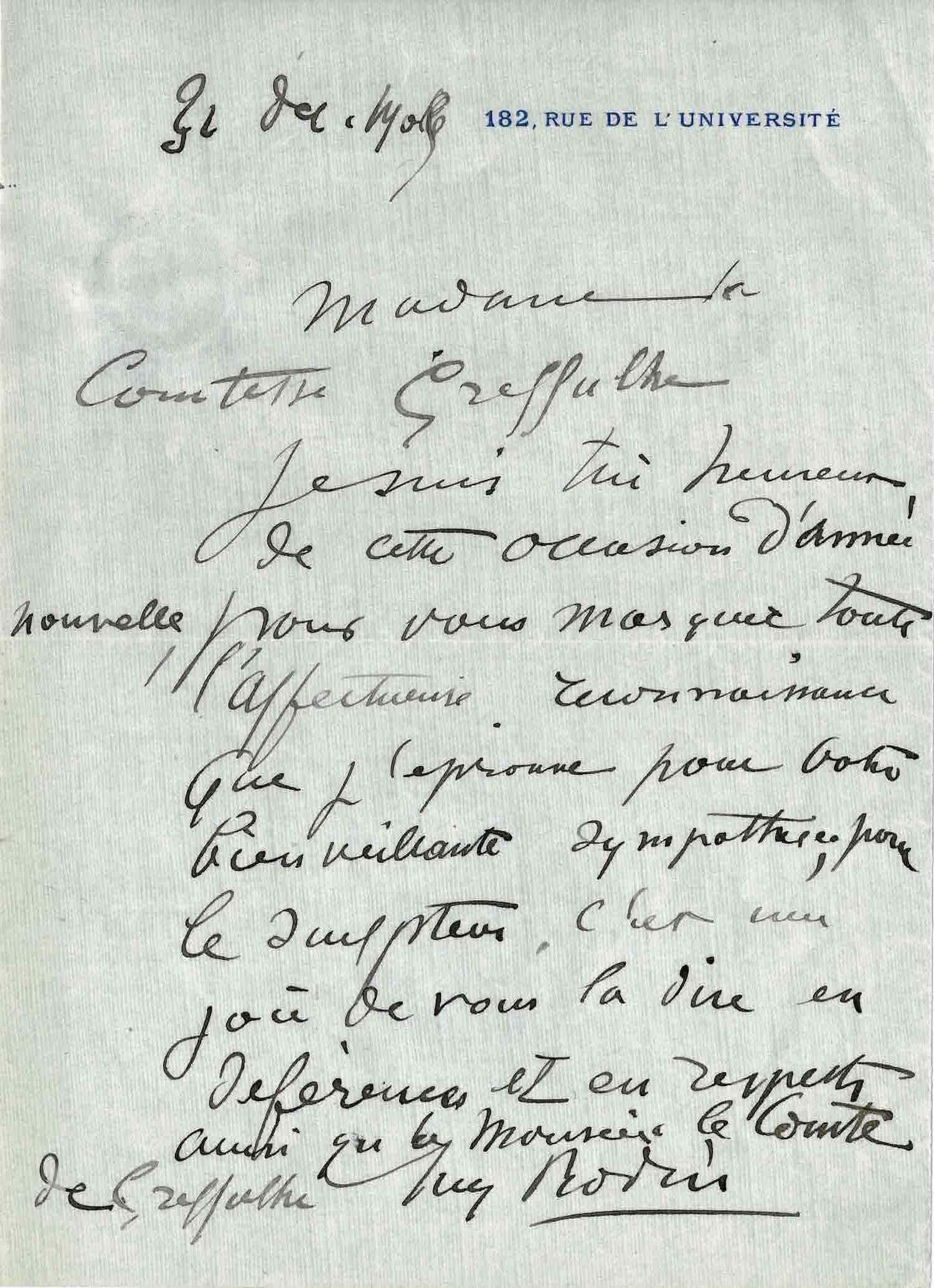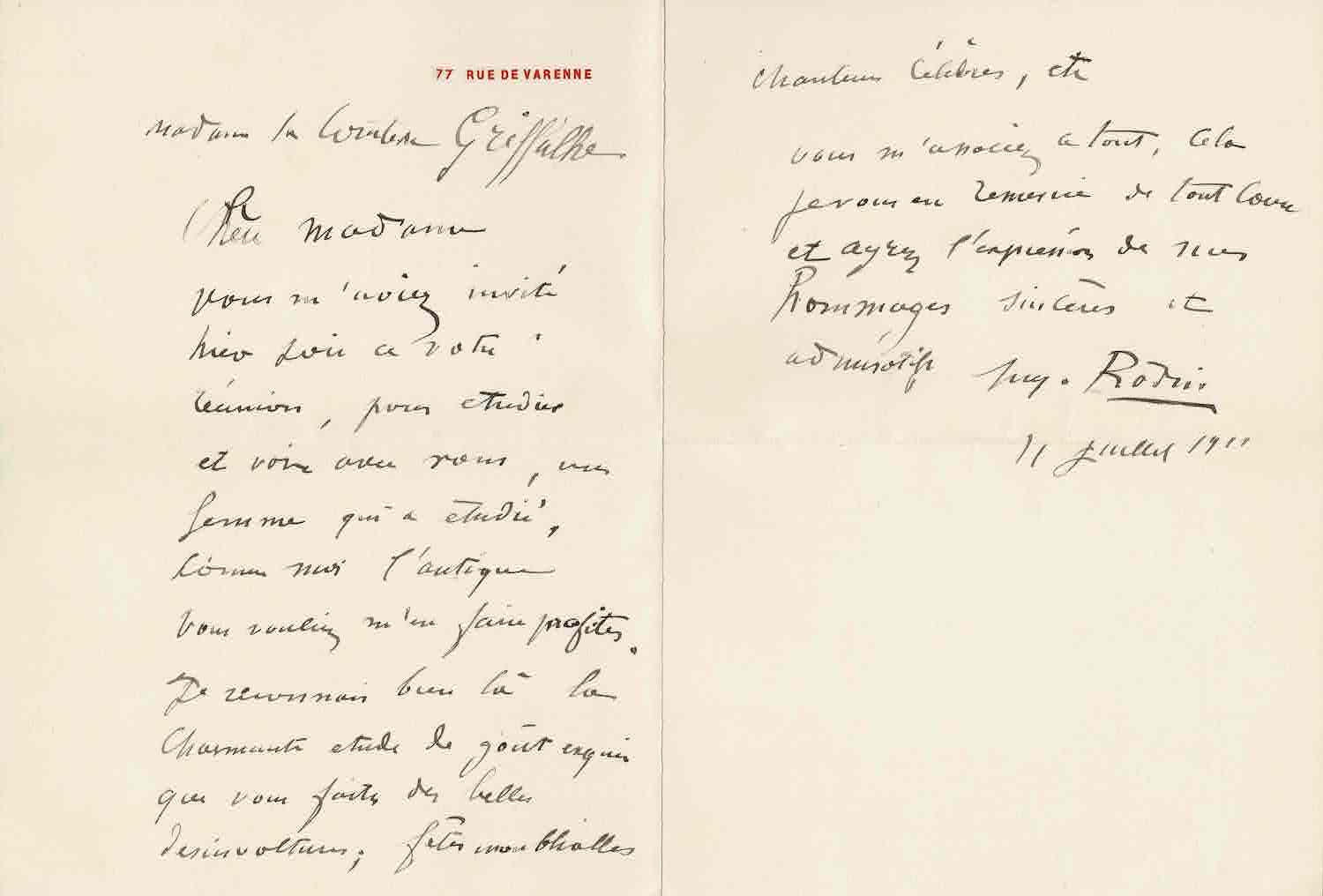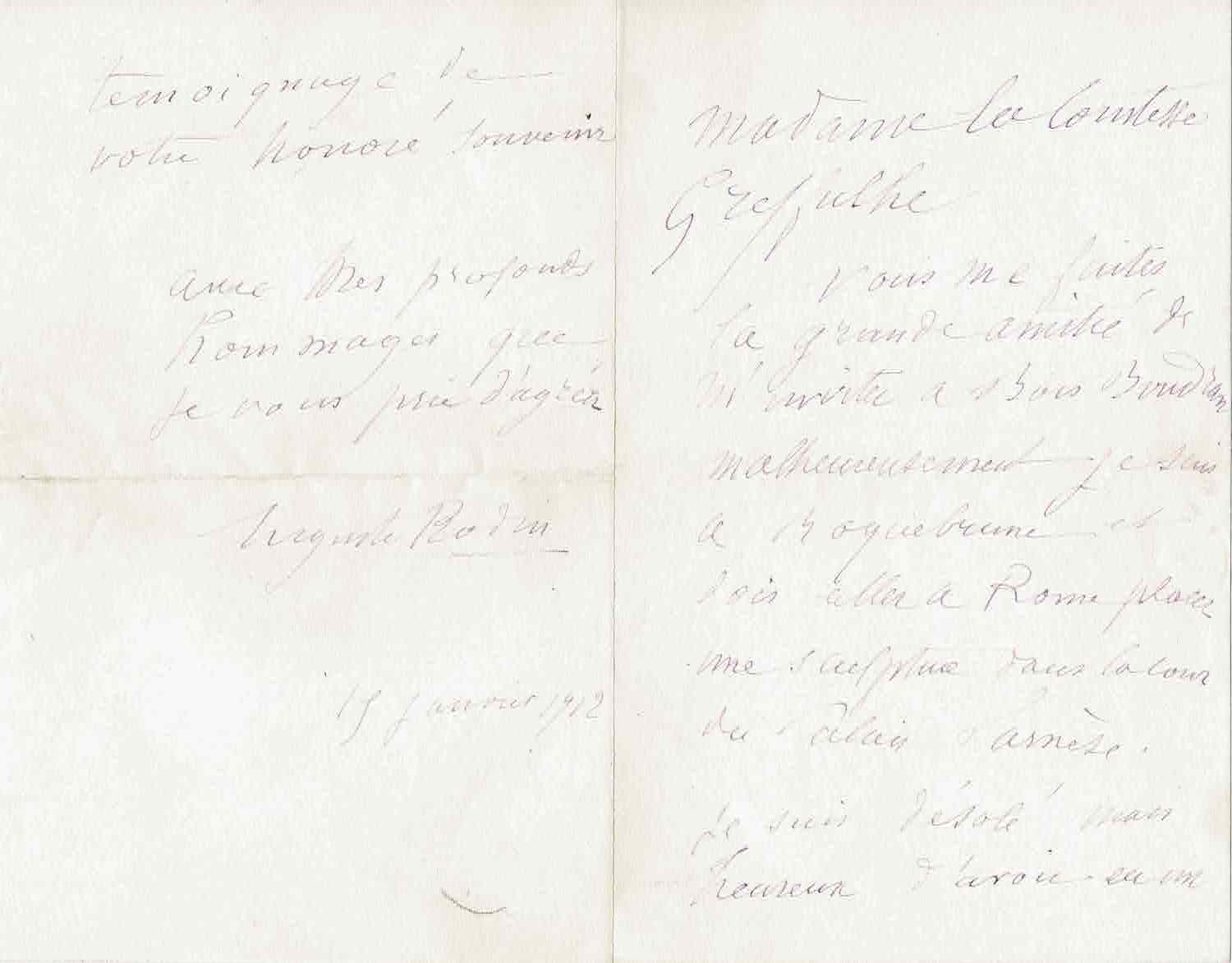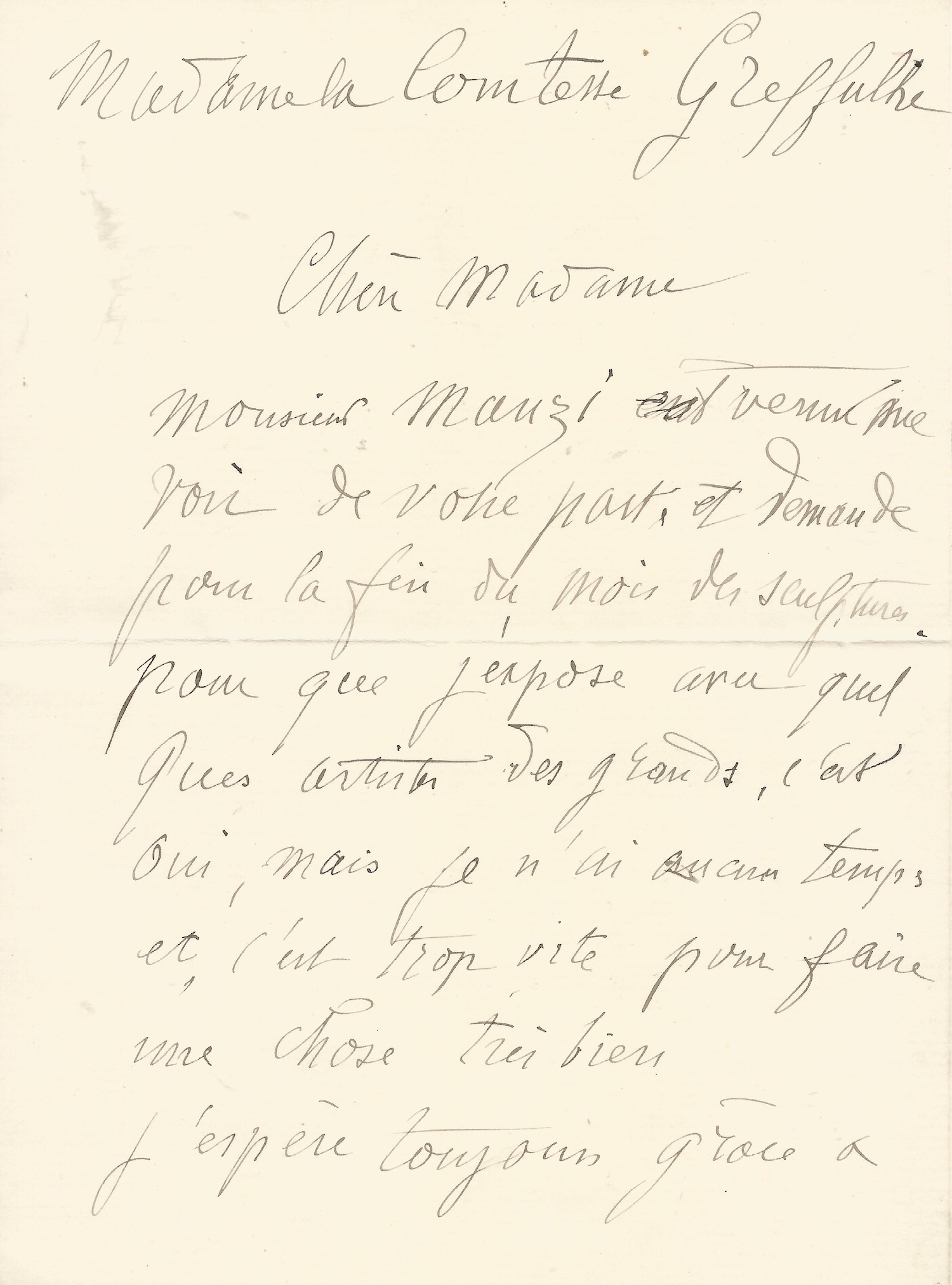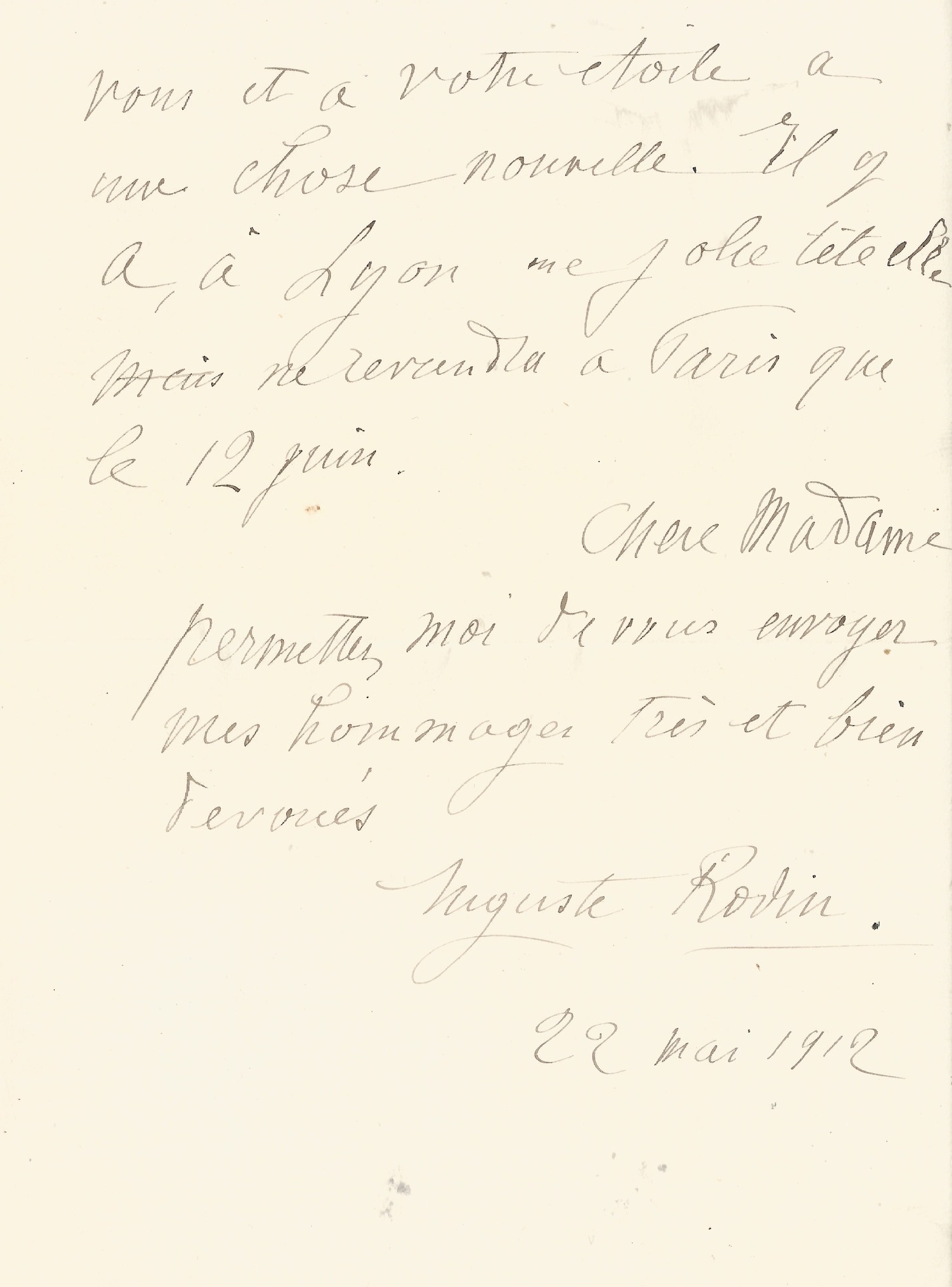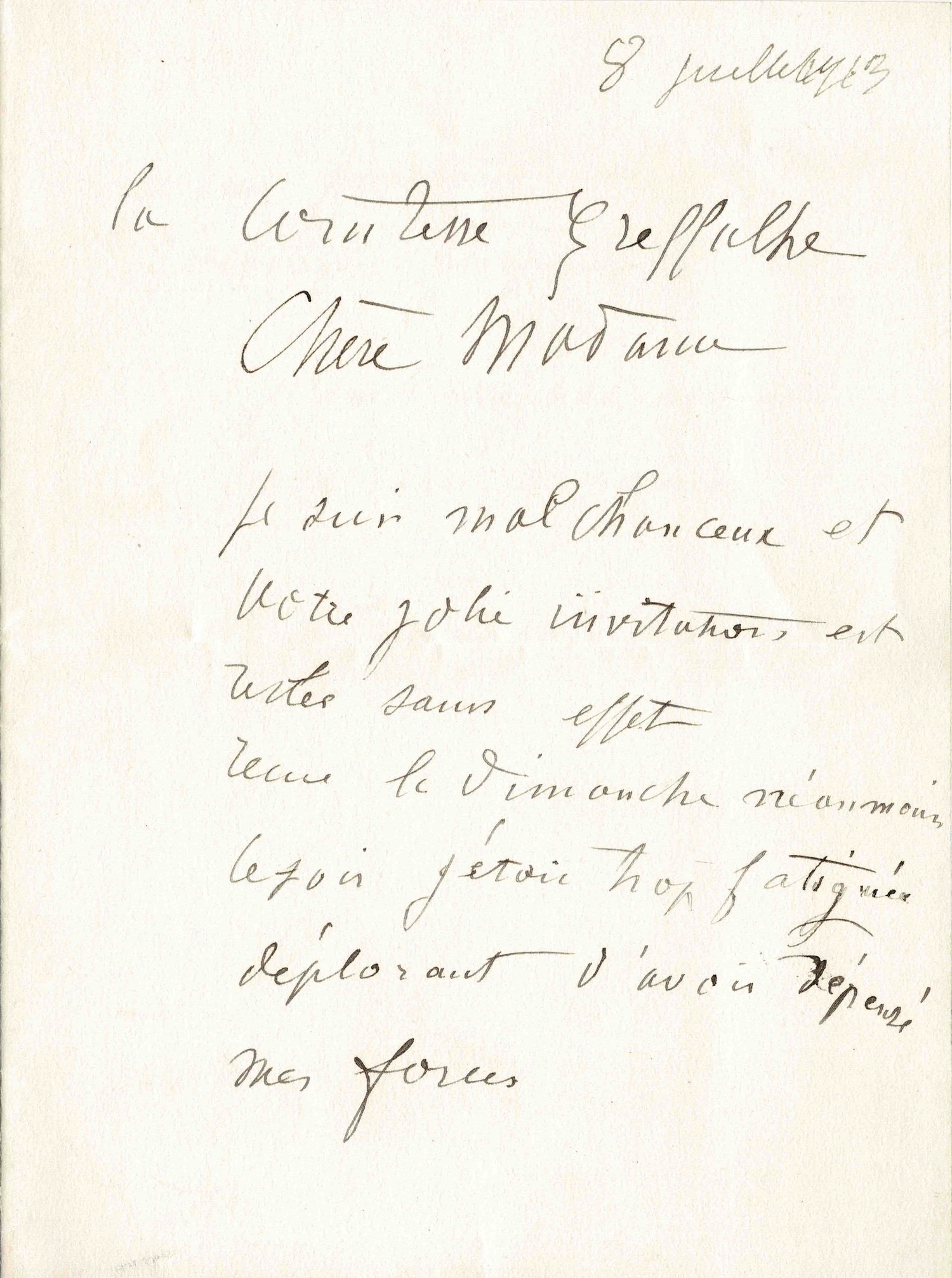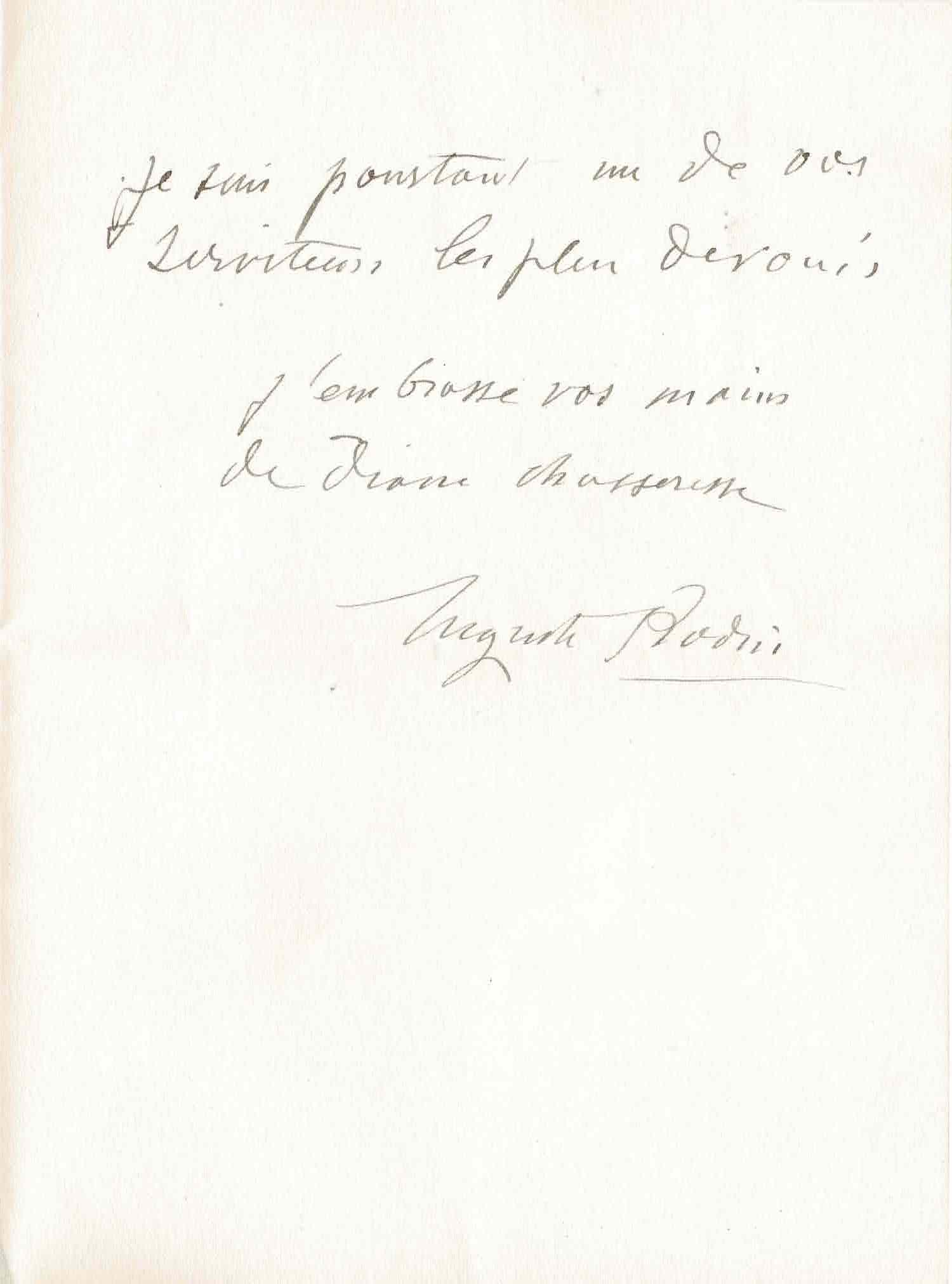Auguste Rodin (1840.1917)
Set of 5 autograph letters signed to Countess Greffulhe.
Nine octavo pages in total.
Between December 1905 and July 1913.
“I kiss your hands, Diana the Huntress. »
Interesting correspondence between the sculptor and Countess Elisabeth Greffulhe, testifying to their artistic bond at the dawn of the 20th century.
________________________________
Letter No. 1.
[Paris] December 31, 1905.
A page in-8° on paper at his address on rue de l'Université.
Rodin anticipates the new year to show his gratitude to the countess.
“Madame Countess Greffulhe, I am very happy with this opportunity of a new year to show you all the grateful affection that I feel for your kind sympathy for the sculptor. It is a joy to say it to you with deference and respect as well as to Mr. Count de Greffulhe. Auguste Rodin. »
________________________________
Letter n°2.
[Paris] July 11, 1911.
Two pages in-8° on paper at his address at the Hôtel Biron.
Charming letter from Rodin to Marcel Proust's inspiration, testimony to the Parisian literary and artistic salons of the early 20th century.
“Dear Madam, you invited me to your meeting last night, to study and see with you, a woman who studied, like me in ancient times , you wanted me to benefit from it. I clearly recognize there the charming study of exquisite taste that you make of beautiful casualness ; unforgettable parties, famous singers, etc. You associate me with all this, I thank you with all my heart and accept the expression of my sincere and admiring tributes. Aug. Rodin »
Built by the architect Jean Aubert, the Hôtel Biron – 77 rue de Varenne – was discovered in a state close to abandonment by Rodin in 1908. He rented the four rooms on the ground floor before occupying the entire residence from 1911. In these places, the sculptor prepared the layout of what would become, on August 4, 1919, the Rodin museum.
________________________________
Letter n°3.
[Roquebrune]. January 17, 1912. Two pages in-8°.
“[I] have to go to Rome to place a sculpture in the courtyard of the Palazzo Farnese. »
The French sculptor is leaving for the Palazzo Farnese where one of his greatest masterpieces, The Walking Man, is to be installed.
“Madame Countess Greffulhe. You have done me the great kindness of inviting me to Bois-Boudran, unfortunately I am in Roquebrune and have to go to Rome to place a sculpture in the courtyard of the Palais Farnese. I am sorry but happy to have had a testimony of your honored memory. With my deepest respects which I ask you to accept. Auguste Rodin. January 17, 1912.”
The Walking Man . At the end of the 19th century, Rodin took up one of his studies of Saint John the Baptist , exhibited at the Salon of 1880, in order to rework it. Maintaining the fragmentary appearance of the bust, the sculptor had a plaster proof made in 1900 and assembled two smooth-shaped legs. Master of contrast and balance, Rodin gave life and movement to this colossal figure devoid of head and arms.
Named The Walking Man by the sculptor's assistants, the work was presented at the Pavillon de l'Alma on June 1, 1900 , during his first major personal retrospective.
Twelve years later, the colossus was installed in the atrium of the Palazzo Farnese, in Rome – seat of the French embassy – where it would sit until after Rodin's death, before being returned to France.
From 1947, Alberto Giacometti took up this theme of man in movement. Several versions of his Walking Man were created until the dawn of the 1960s, thus offering sculpture, in the continuity of Rodin, its most beautiful and symbolic letters of nobility.
The Château de Bois-Boudran is located in the commune of Fontenailles in Seine-et-Marne. Acquired at the dawn of the 19th century by Count Jean-Henry-Louis Greffulhe, the castle passed by descent to his grandson, Henry Greffulhe, husband of the countess, and Marcel Proust's model for the character of the Duke of Guermantes.
________________________________
Letter n°4.
Without place. May 22, 1912. Two pages in-8°.
Rodin asked for an exhibition of his sculptures.
“Madame Countess Greffulhe. Dear Madam, Mr. Manzi [the publisher and art dealer Michel Manzi] came to see me on your behalf and is asking for sculptures for the end of the month so that I can exhibit with some major artists; that's yes, but I have no time and it's too fast to do something very well. I always hope, thanks to you and your star, for something new. There is a pretty face in Lyon who will not return to Paris until June 12. Dear Madam, allow me to send you my most devoted tributes. Auguste Rodin. May 22, 1912.”
________________________________
Letter n°5.
[Paris] July 8, 1913. Two pages in-8°.
“I kiss your hands of Diana the Huntress. »
Rodin, exhausted, was unable to respond to the countess' lovely invitation.
“Countess Greffulhe. Dear Madam, I am unlucky and your lovely invitation remained in vain ; received on Sunday, however in the evening I was too tired, deploring having wasted my strength. Yet I am one of your most devoted servants. I kiss your hands, Diana the Huntress . Auguste Rodin. »
________________________________
Socialite and lover of the arts, Elisabeth Greffulhe was a constant support for Rodin and the promotion of his sculpture. Indeed, over the years, she introduced the artist to numerous patrons, collectors and statesmen, such as the King of Portugal, the King of Sweden, the Grand Duchess Wladimir of Russia, the Minister of Argentina Mr. Lainez, and the Minister of Public Education Léon Bourgeois, Isadora Duncan, Edmond Rostand, Gabriele d'Annunzio...
In 1912, the countess, then president of the French Decorative Art Committee, requested Rodin's collaboration for an exhibition organized for the benefit of the Homeschooling Schools and the central office of charities.
In 1913, Rodin contributed – with a Dante mask – to the transatlantic exhibition organized by the countess aboard the liner France.
The following year, organizing the exhibition Modern French Art: from Ingres to Cézanne in London, the Countess again invited Rodin to exhibit his sculptures among the works of the greatest French masters. The artist entrusted nineteen creations – including The Bronze Age , The Bust of Victor Hugo , and a study by Balzac – and traveled across the Channel to attend the opening, then a second trip to London to present himself. even his works to Queen Mary of England.
________________________________
Bibliography: Countess Greffulhe and Rodin. Romances notes. J. Newton & M. Fol.

